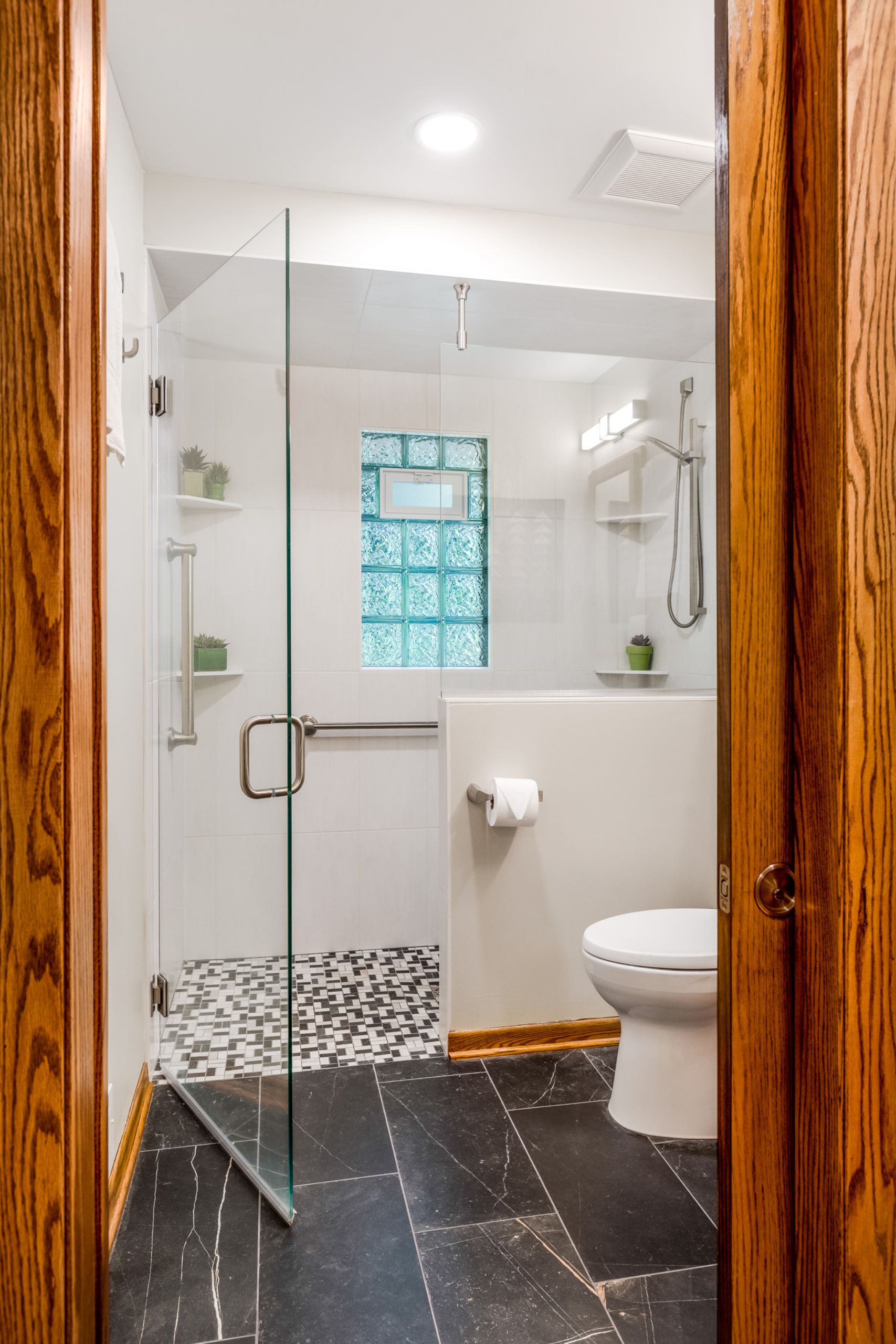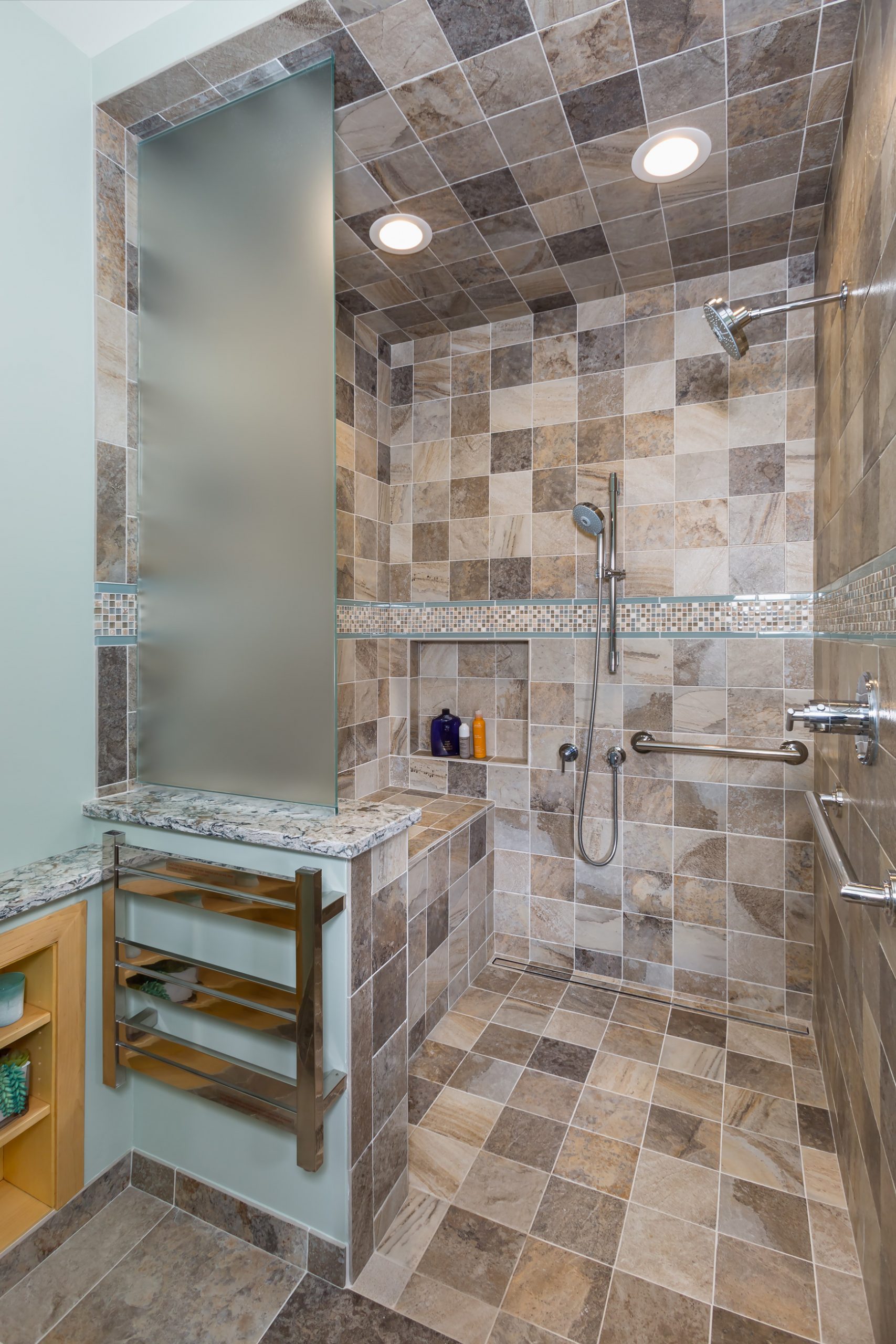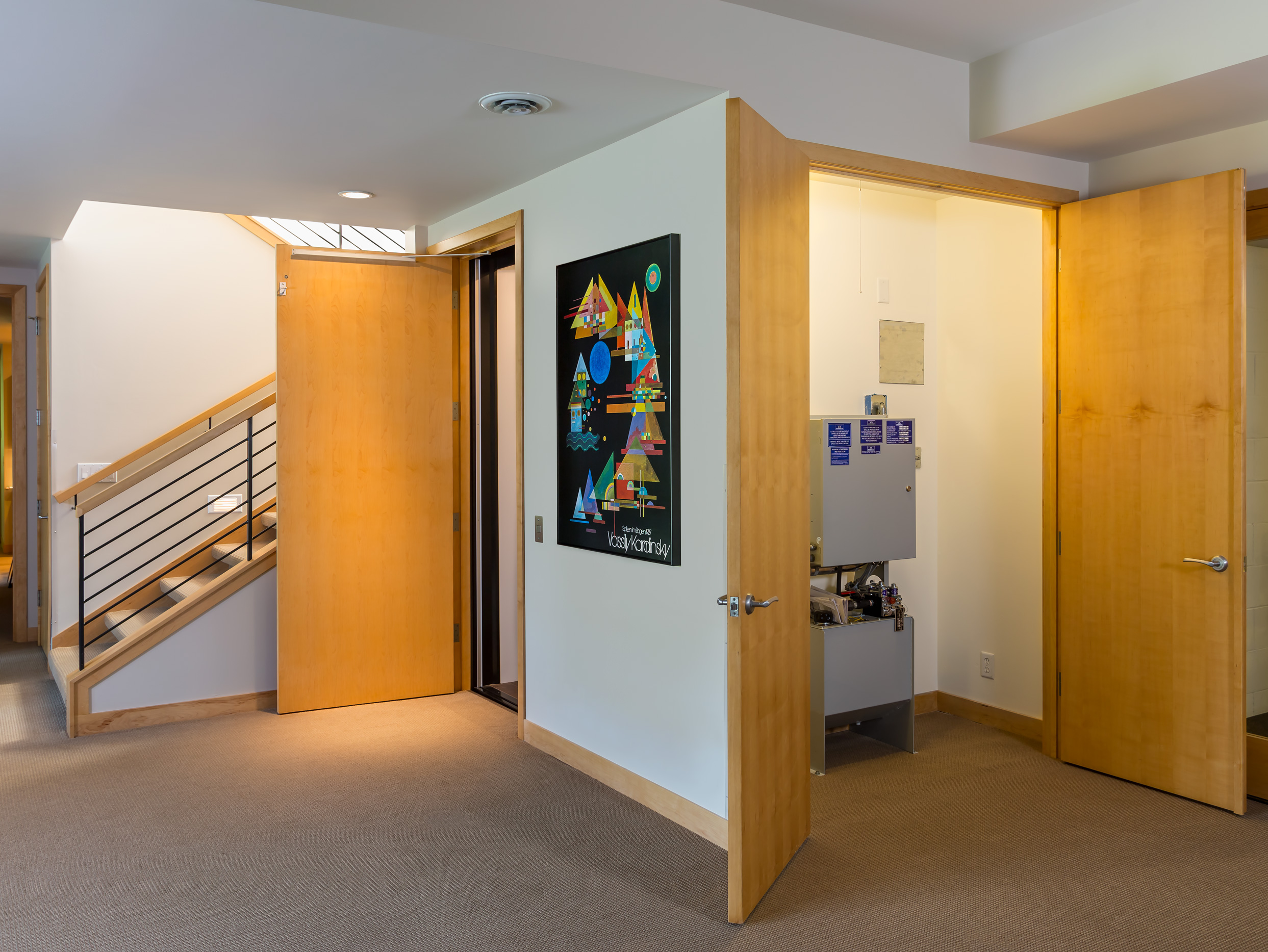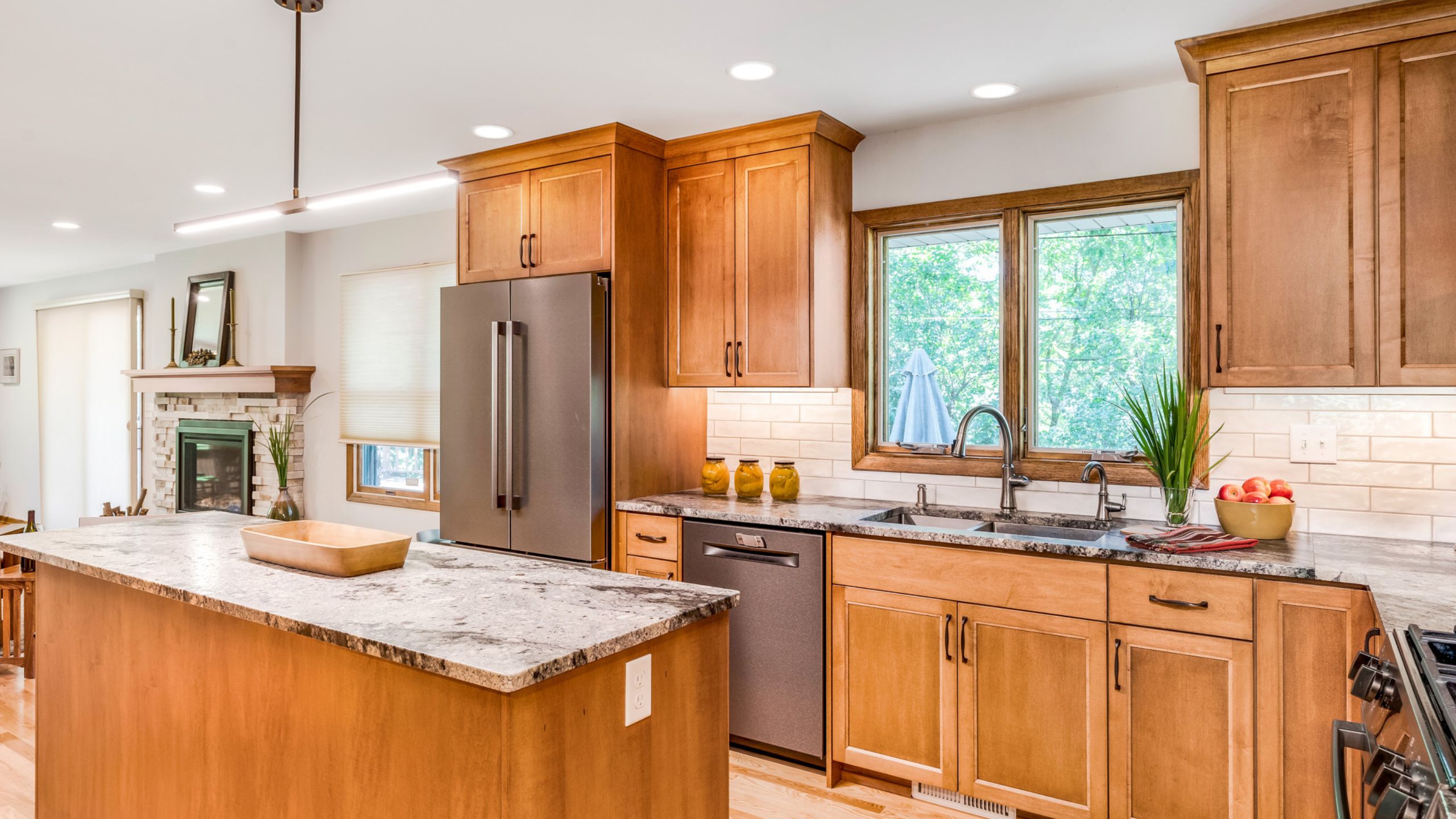
AGING-IN-PLACE TIPS
How to Prepare Your Home for the Future
Consider these aging-in-place tips when remodeling your home.
Thinking ahead today will allow you to stay in your home for many more years. Even if you aren’t thinking about remodeling for aging-in-place or retirement, many of these features will make future accessibility modifications easier down the road. Below is an extensive list that breaks down many spaces within your home. We hope that you’ll consider these tips while planning your next new construction or retirement renovations. No matter where you are in your remodeling journey, it’s nice to know that options exist to make living-in-place, a reality.
Let’s start with the big picture.
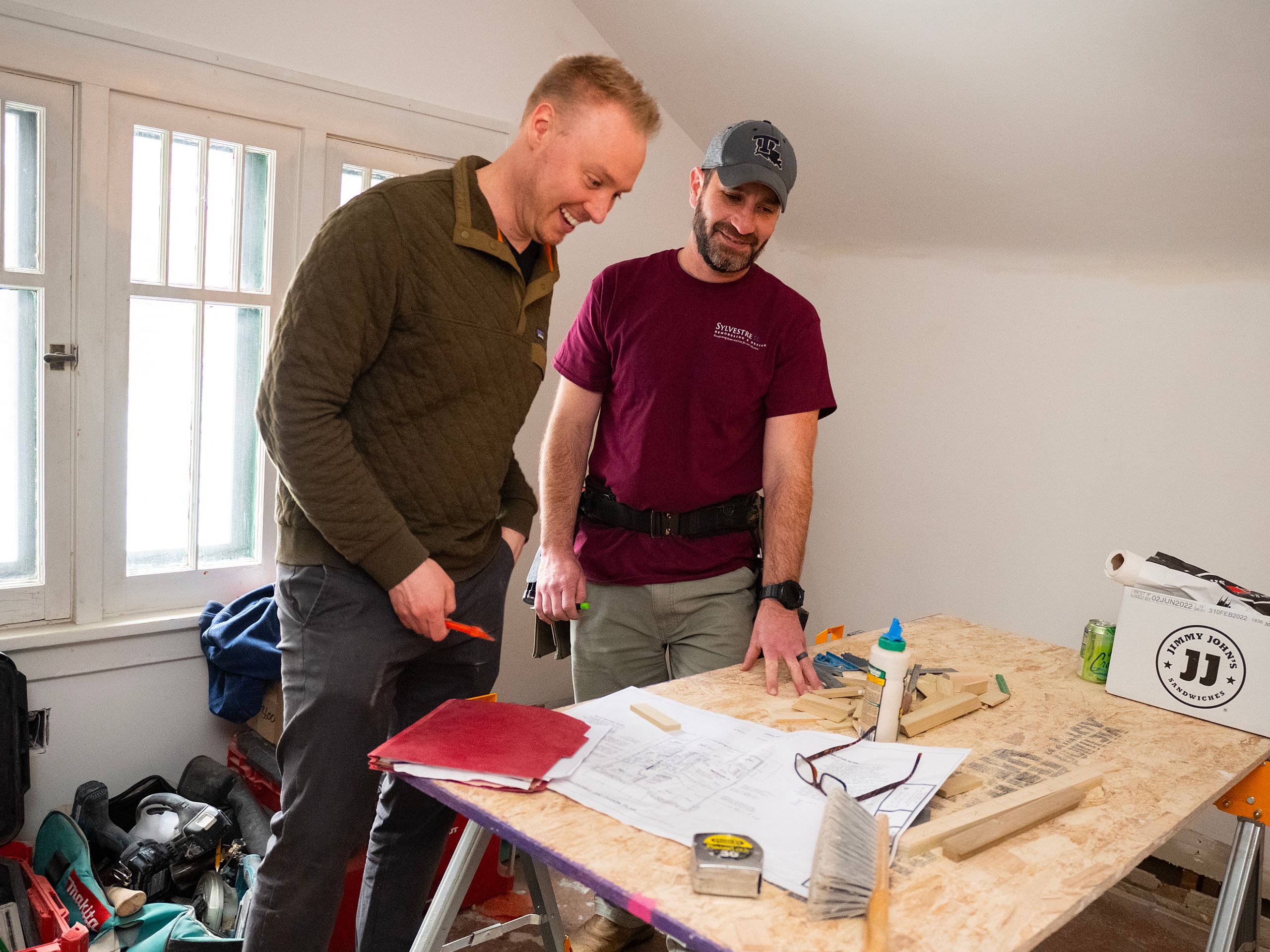
Overall Floor Plan
- Main living on a single story, including a full bath
- No steps between rooms/areas on the same level
- 5-foot by 5-foot clear/turn space in living area, kitchen, bedroom, and a bathroom
Exterior
- Low-maintenance exterior (vinyl, brick)
- Low-maintenance shrubs and plants
- Deck, patio, or balcony surfaces are no more than a half-inch below interior floor level if made of wood
Next, consider the avenues you use to navigate your home.
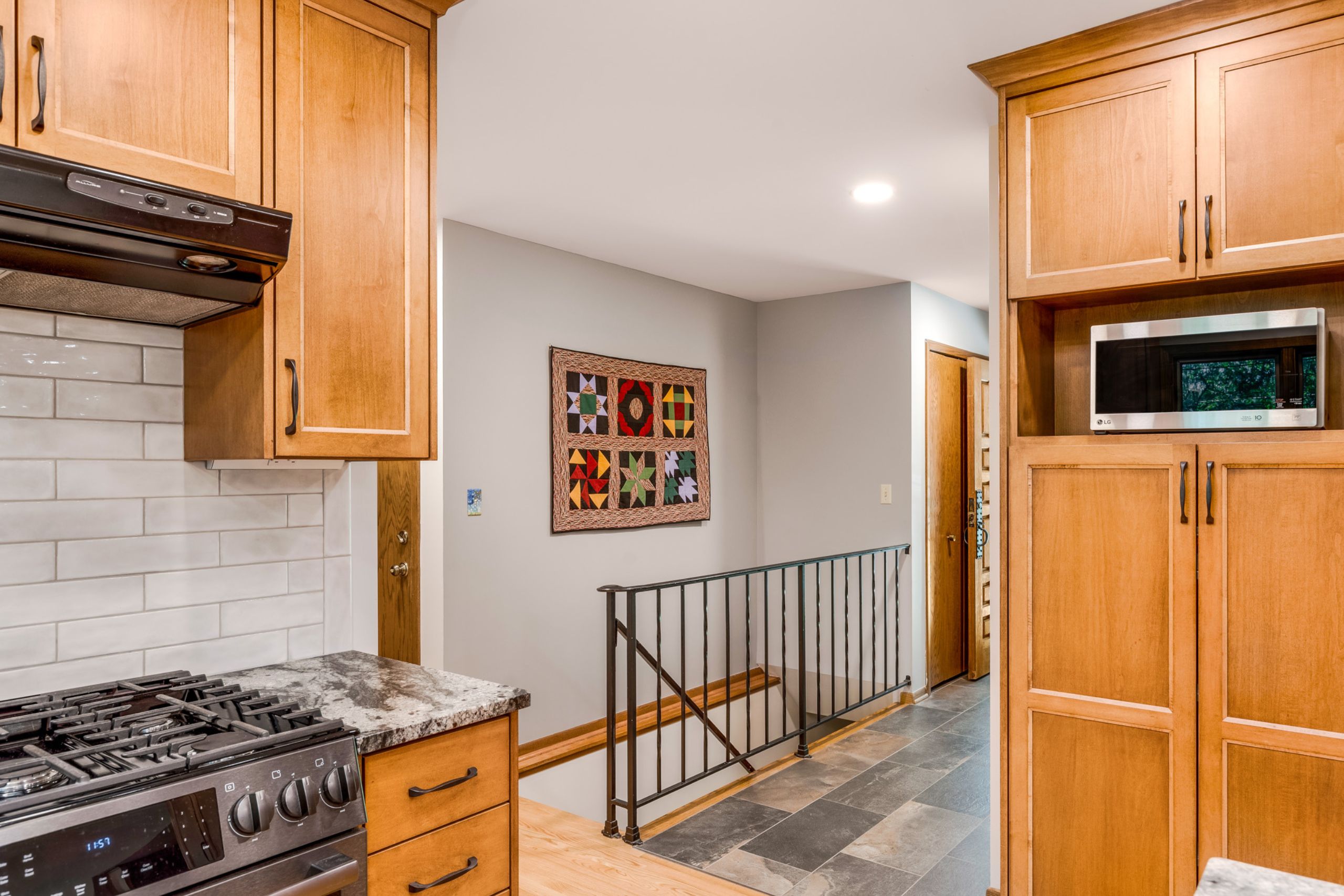
Hallways
- Minimum of 36-inches wide, wider preferred
- Well lit
Thresholds
- Flush preferable
- Exterior maximum of a half-inch beveled
- Interior maximum of a quarter inch
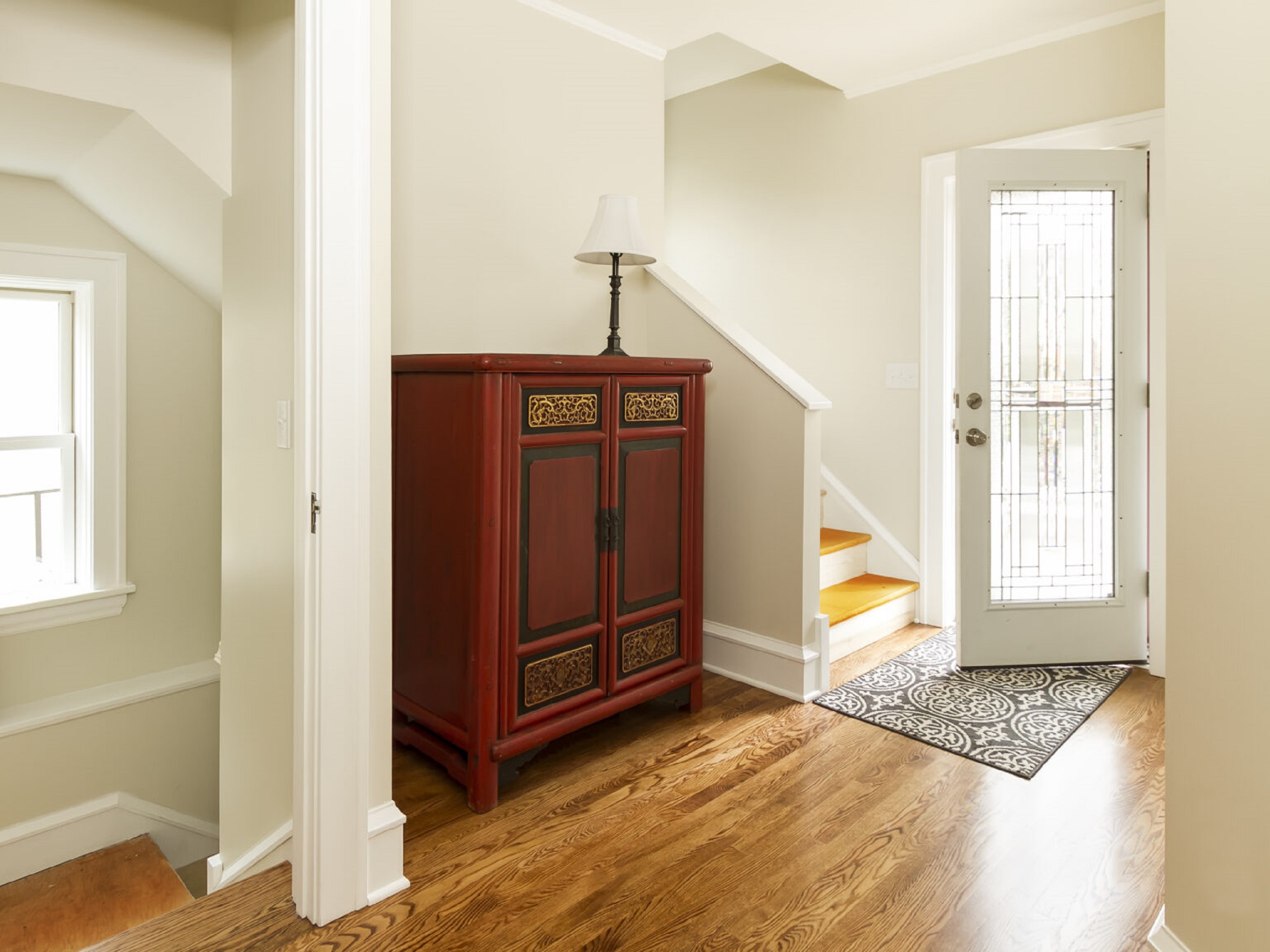
Entry
- Accessible path of travel to the home
- At least one no-step entry with a cover
- Sensor light at exterior no-step entry focusing on the front-door lock
- 32-inches of clear width, which requires a 36-inch door
- Non-slip flooring in the foyer
- Entry door sidelight or high/low peephole viewer; sidelight should provide both privacy and safety
- Doorbell in an accessible location
- Surface to place packages on when opening the door
Don’t forget about your doorways and windows.
Interior Doors
- 32-inches of clear width, which requires a 36-inch door
- Levered door hardware
Windows
- Windows for natural light
- Lowered windows or taller windows with a lower sill height
- Low maintenance exterior and interior finishes
- Easy to operate hardware
Now let’s turn to the spaces we use every day: the kitchen, bathroom, and laundry room.
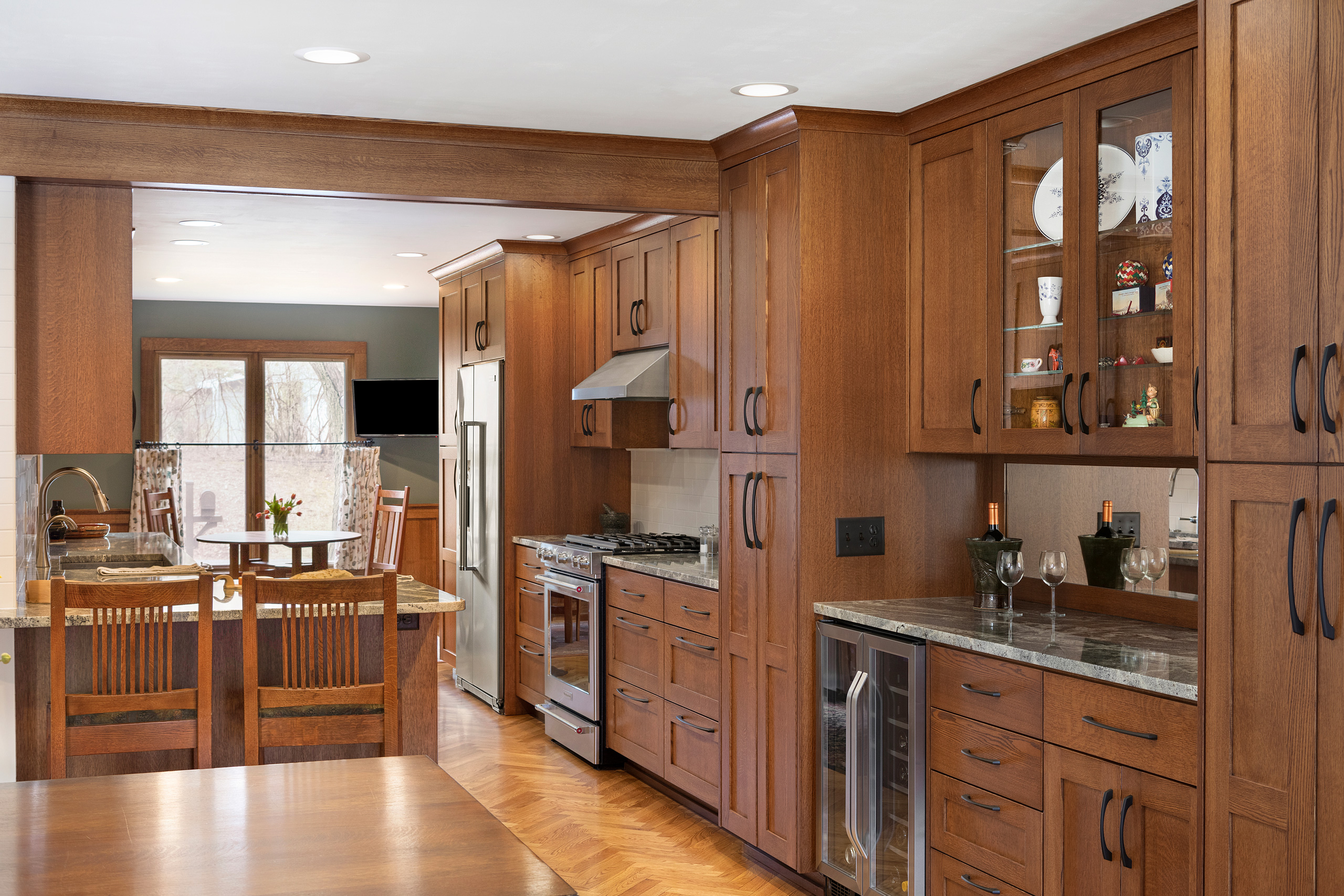
Kitchen
Faucets
- Lever handles or pedal-controlled
- Thermostatic or anti-scald controls
- Pressure balanced faucets
Counters
- Wall support and provision for adjustable and/or varied height counters and removable base cabinets
- Upper wall cabinetry is three inches lower than conventional height
- Accented stripes on edge of countertops to provide visual orientation to the workspace
- Counter space for dish landing adjacent to or opposite all appliances
- Base cabinet with roll-out trays and lazy susans
- Pull-down shelving
- Glass-front cabinet doors
- Open shelving for easy access to frequently used items
Appliances
- Easy-to-read controls
- Microwave oven at counter height or in wall
- Side-by-side refrigerator/freezer
- Side-swing or wall oven
- Raised dishwasher with push-button controls
- An electric cooktop with level burners for safety in transferring between the burners, front controls, and downdraft feature to pull heat away from the user; light to indicate when the surface is hot
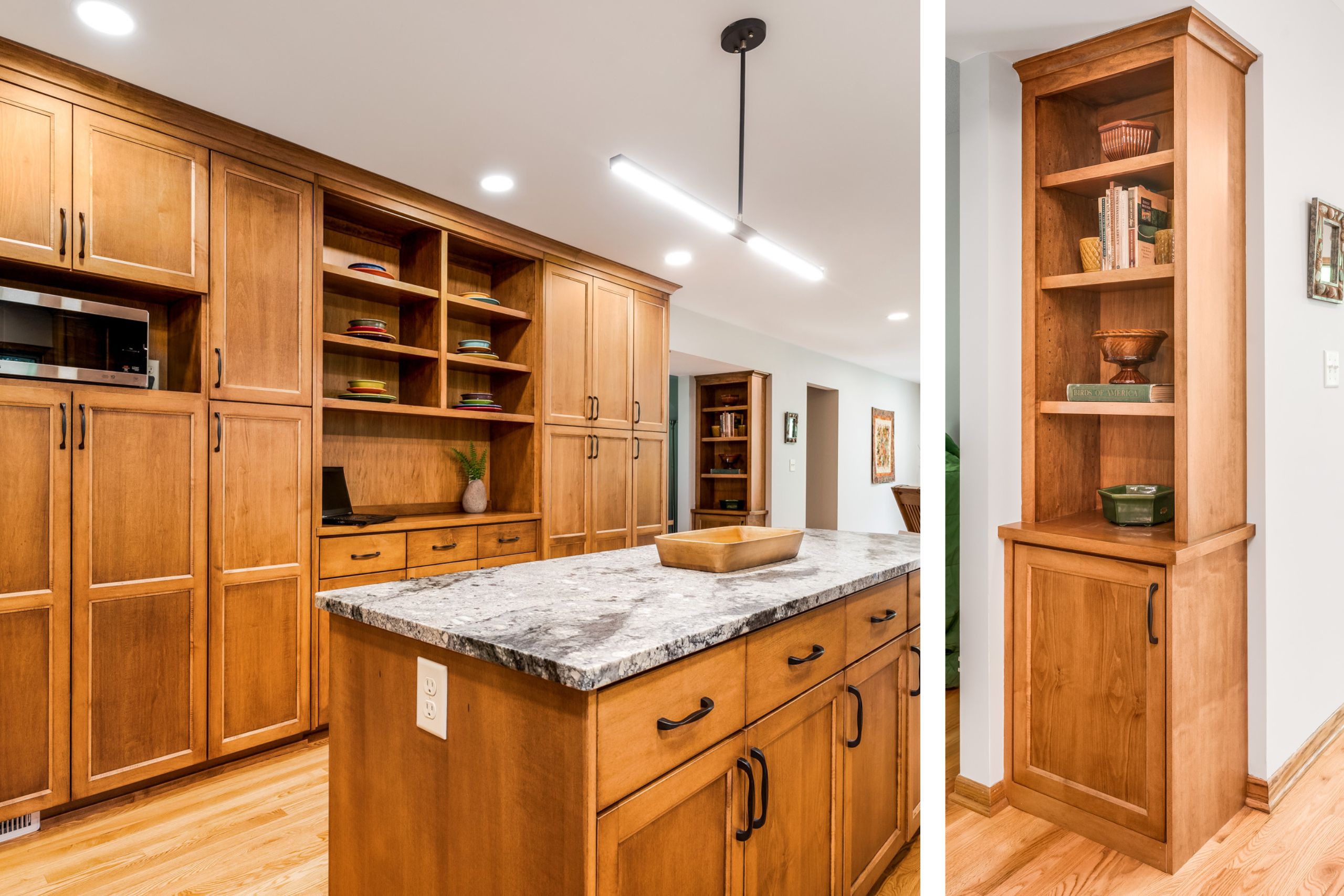
Storage
- Adjustable closet rods and shelves
- Lighting in closets
- Easy-open doors that do not obstruct access
Miscellaneous Details
- 30-inch by 48-inch clear space at appliances or 60-inch diameter clear space for turns
- Multi-level work areas to accommodate cooks of different heights
- Open under-counter seated work areas
- Placement of task lighting in appropriate work areas
- Loop handles for easy grip and pull
- Pull-out spray faucet; levered handles
Bathroom
- Wall support and provision for adjustable and/or varied height counters and removable base cabinets
- Contrasting color edge border at countertops
- At least one wheelchair maneuverable bath on the main level with a 60-inch turning radius or acceptable T-turn space and 36-inch by 36-inch or 30-inch by 48-inch clear space
- Bracing in walls around the tub, shower, shower seat, and toilet for installation of grab bars to support 250-300 pounds
- If the stand-up shower is used in the main bath, it is curbless and a minimum of 36-inches wide
- Bathtub – lower for easier access
- Fold-down seat in the shower
- Adjustable/handheld showerheads, 6-foot hose
- Tub/shower controls offset from the center
- Shower stall with built-in antibacterial protection
- Light in shower stall
- Toilet two and a half inches higher than the standard toilet (17-19 inches) or height-adjustable
- The design of the toilet paper holder allows rolls to be changed with one hand
- Wall-hung sink with knee space and panel to protect the user from pipes
- Slip-resistant flooring in bathroom and shower
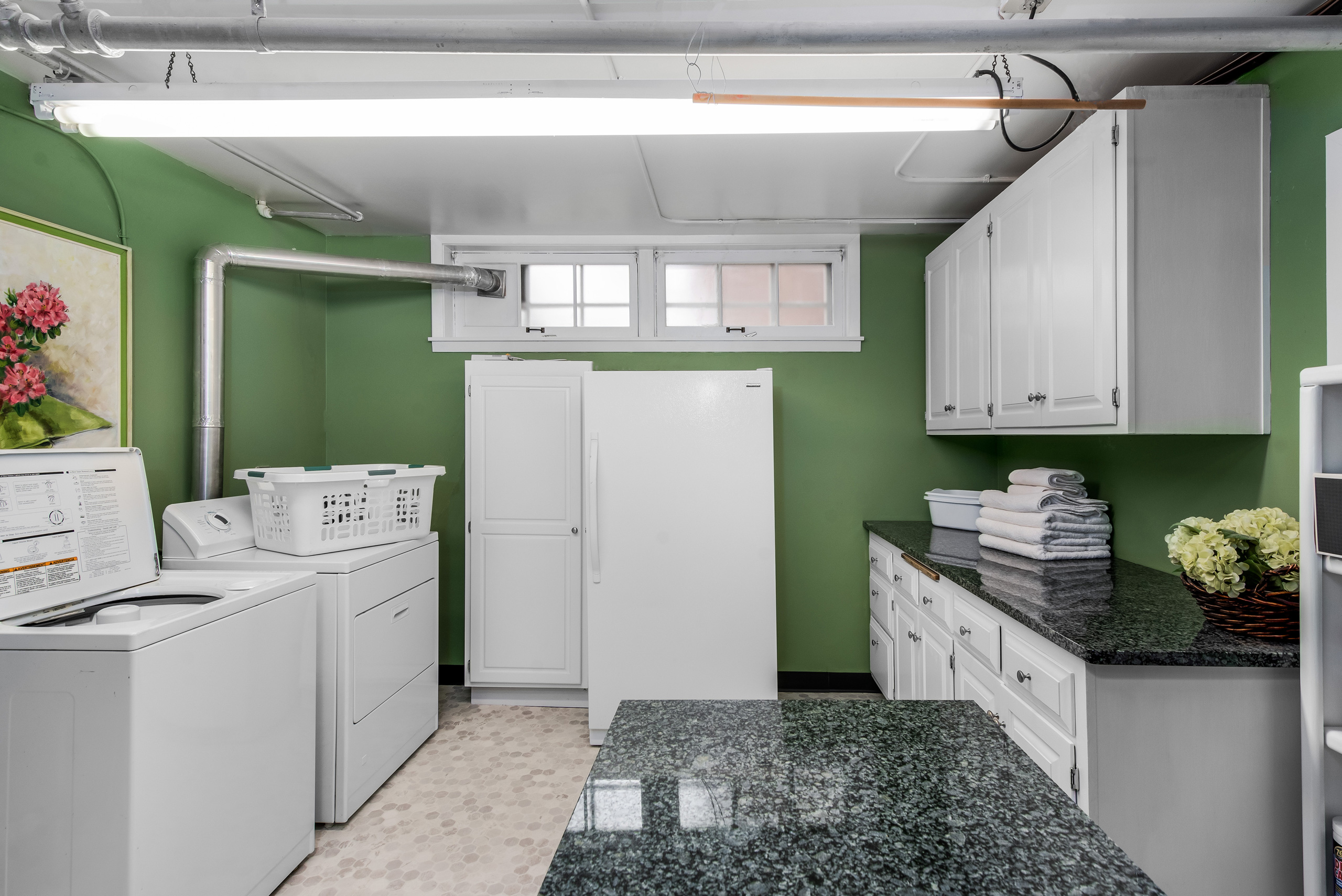
Laundry
- Easy-to-read controls
- The washing machine and dryer raised 12-15 inches above the floor
- Front-loading laundry machines
- Pull-out spray faucet; levered handles
- In multi-story homes, laundry chute or laundry facilities in the master bedroom
Universal design details create an accessible space suited for everyone.
Stairways, Lifts, and Elevators
- Adequate handrails on both sides of the stairway, one and a quarter-inch diameter
- Increased visibility of stairs through contrast strip on top and bottom stairs, color contrast between treads and risers on stairs, and use of lighting
- Multi-story homes may provide either a pre-framed shaft (i.e., stacked closets) for the future elevator or a stairway width that must be a minimum of four feet to allow space for a lift
- Residential elevator or lift
Ramps
- Slope no greater than one-inch rise for each 12-inches in length, adequate handrails
- Five-foot landing is provided at the entrance
- Two-inch curbs for safety
Can you tell we’re passionate about aging-in-place? Here are a few more tips for the rest of the home.
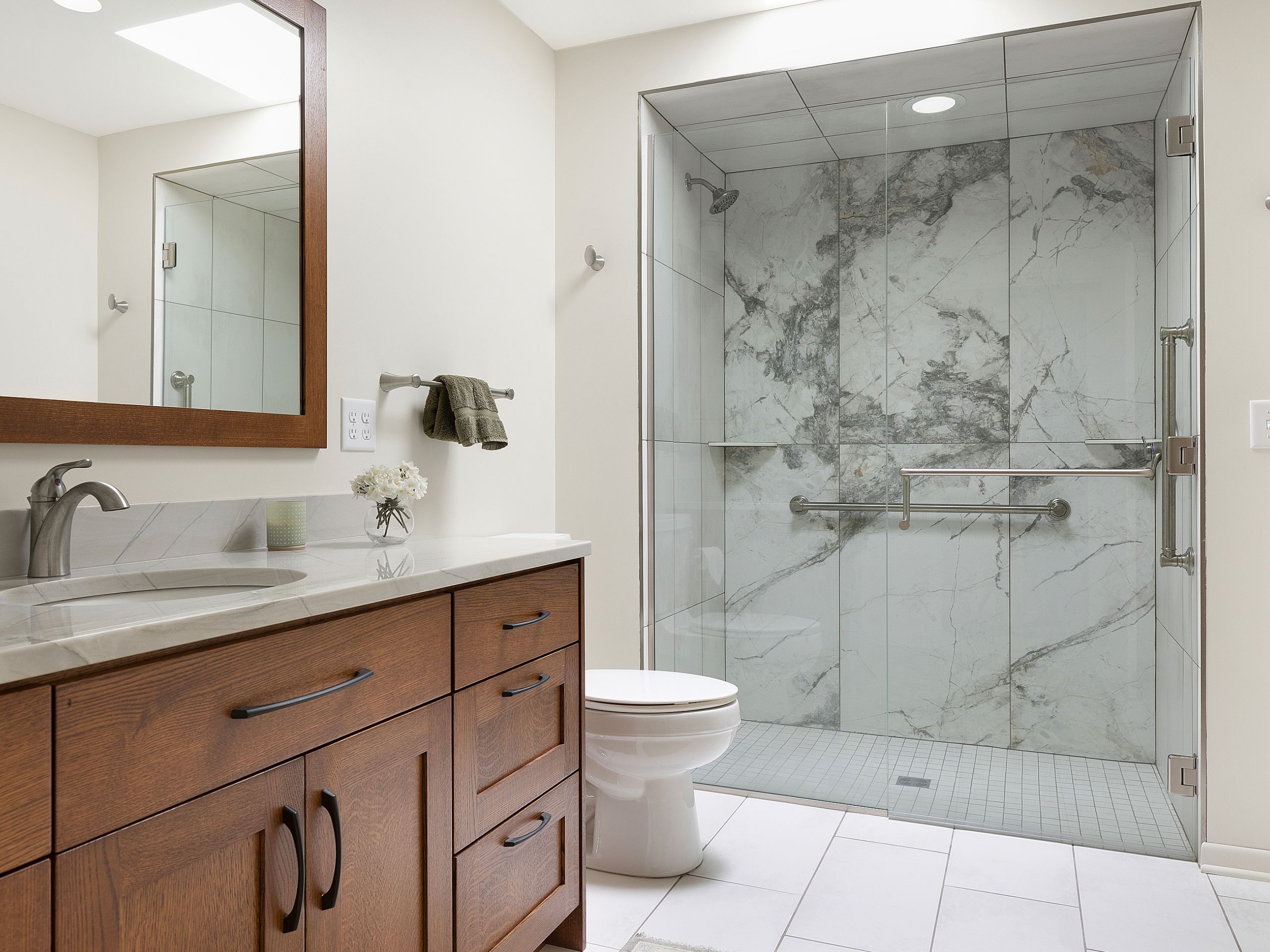
Flooring
- Smooth, non-glare, slip-resistant surfaces – interior and exterior
- If carpeted, use low (less than a half-inch high pile) density, with a firm pad
- Color/texture contrast to indicate a change in surface levels
Heating, Ventilation, and Air Conditioning
- HVAC should be designed so filters are easily accessible
- Energy-efficient units
- Windows that can be opened for cross-ventilation, fresh air
Electrical, Lighting, Safety, and Security
- Light switches by each entrance to halls and rooms
- Light receptacles with at least two bulbs in vital places (exits, bathroom)
- Light switches, thermostats, and other environmental controls are placed in accessible locations no higher than 48 inches from the floor
- Electrical outlets 15-inches on center from the floor; may need to be closer than 12 feet apart
- Clear access space of 30-inches by 48-inches in front of switches and controls
- Rocker or touch light switches
- Audible and visual strobe light system to indicate when the doorbell, telephone or smoke, or CO2 detectors have been activated
- High-tech security/intercom system that can be monitored, with the heating, air conditioning, and lighting, from any TV in the house
- Easy-to-see and read thermostats
- Pre-programmed thermostats
- Flashing porch light or 911 switch
- Direct wired to police, fire, and EMS (as an option)
- Home wired for security
- Home wired for computers
Garage or Carport
- Covered carports and boarding spaces
- Wider than average carports to accommodate lifts on vans
- Door heights may need to be nine feet to accommodate some raised roof vans
- Five-foot minimum access aisle between accessible van and car in the garage
- If the code requires a floor to be several inches below the entrance to the house for fume protection, can slope the entire floor from front to back to eliminate the need for a ramp or step
- Ramp to the doorway, if needed
- Handrail, if steps
Energy-Efficient Features
- In-line framing with two by six studs spaced 24-inches on center
- Air-barrier installation and sealing of ductwork with mastic
- Reduced-size air conditioning units with gas furnaces
- Mechanical fresh air ventilation, installation of air returns in all bedrooms, and use of carbon monoxide detectors
- Installation of energy-efficient windows with Low-E glass
Reduced Maintenance/Convenience Features
- Easy to clean surfaces
- Central vacuum
- Built-in pet feeding system
- Built-in recycling system
- Videophones
- Intercom system
We promise, just a few more ideas!
- Separate apartment for rental income or future caregiver
- Flex room that can be used as a nursery or playroom when the children are young and as a home office later; if combined with a full bath, the room could also be used for an aging parent/aging in place
Source: Home Innovation Research Labs ToolBase online resources.
Our award-winning expertise in Universal Design will make sure that your retirement renovations enhance and improve your living space for many years to come.

Guide to Universal Design
Our in-depth guide to aging-in-place home design is packed with ideas and information.
"*" indicates required fields
Universal Design Posts
-
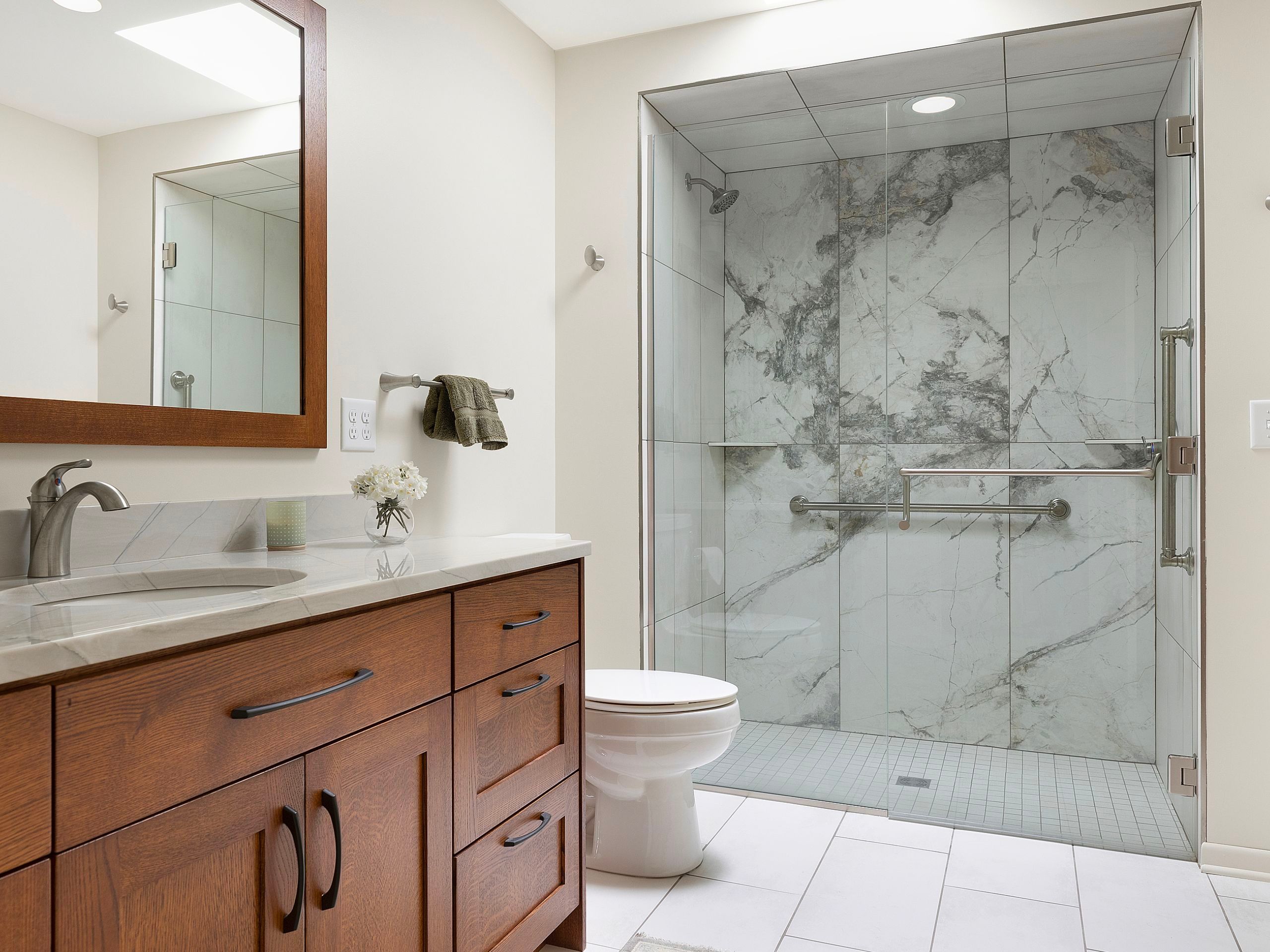
Universal bathroom design features
According to the AARP, “Even a small bathroom can be modified to improve accessibility.” For aging-in-place, universal design features make bathrooms more accessible.
-

What is a CAPS?
John Sylvestre explains what a Certified Aging-in-Place Specialist (CAPS) remodeler is and what can be achieved through training and testing.

